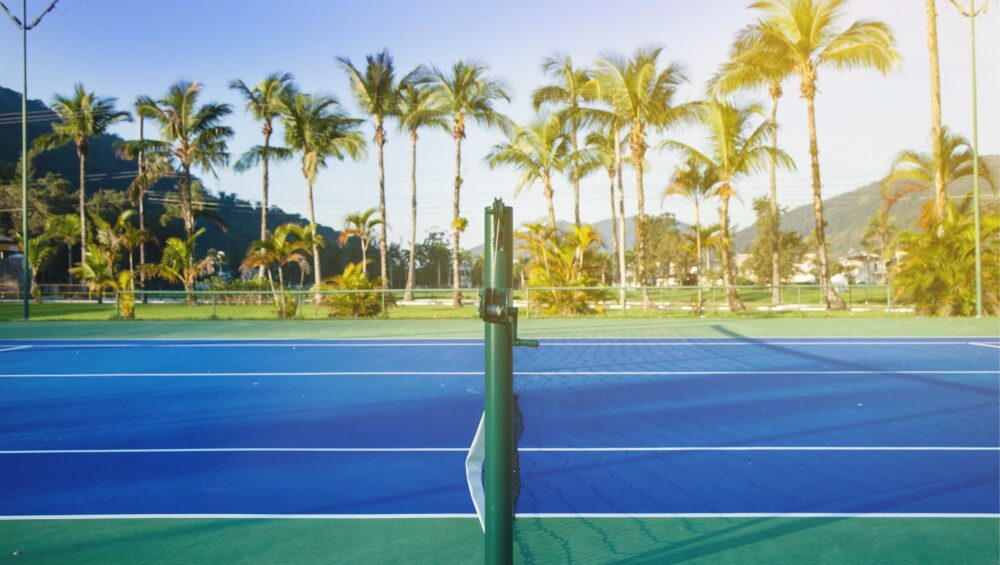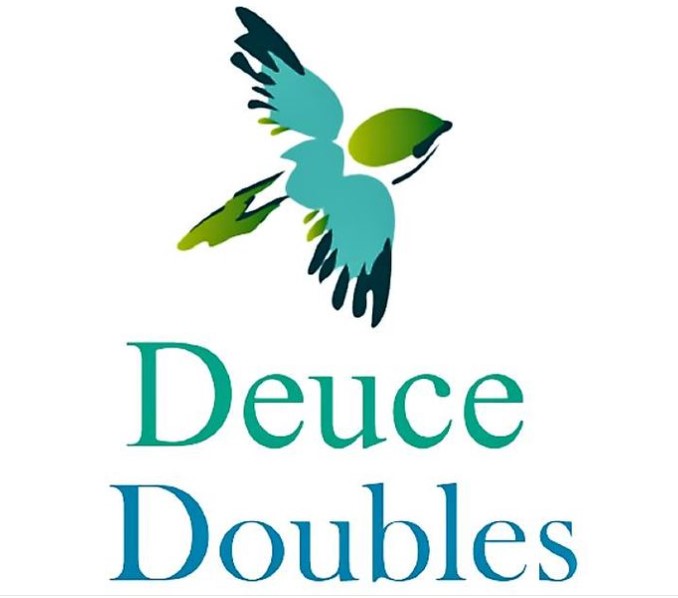Playing Doubles: Ultimate Tennis Guide

Ready to start playing doubles? Real doubles?
In this guide, you will master tennis doubles positioning, gameplay, and strategy.
How To Play Doubles
Positioning
Doubles, as the name implies, is one team of two playing against another. Each team takes one side of the court.
When playing doubles, one player per team must stand on the deuce side as if they were playing singles. The other players must stand on the ad side. Usually, this player is inside the service box, close to the net. This person is called the “net player”, but they are also allowed to stand back at the baseline.
After each point, the serving team switches sides, keeping their positions at the baseline and net. The receiving team, on the other hand, switches positions while staying on their side.
The rest of the game is the same as singles (Although, unlike singles, the alleys are in).
Tennis Doubles Tactics
At The Net
The net player can make or break a point with a single shot!
You can make the point by hitting the ball at the other net player’s feet. They’ll probably miss the shot, and their partner, on the other side, almost certainly will as well.
If this isn’t possible, attack the middle of the court. All it takes is a little confusion between teammates to win.
Another way to cause confusion is to poach. Poaching is when the net player hits a ball intended for the baseline player. By poaching, you limit your opponents’ reaction time and force them to quickly adjust their position.
At The Baseline
The baseline player also has leverage. From here, you can knock your opponents out of position and set yourself up for a put-away shot.
One way to do this is by hitting deep shots. Your opponent will have to fall back, so use this to your advantage and come up to the net. Your opponent’s return will likely be an easy put-away (but be careful if they lob it!).
Attacking the middle is also effective at the baseline. While doing so from the net can yield more results, any confusion among your opponents will destroy their strategy.
Lobbing is also a great tactic. Like deep shots, it forces your opponents back, giving you more leverage at the net. It can also knock your opponents out of position.
Don’t forget about the alleys either. Hitting the ball away from the other team (like in the alleys, for example) forces them to work for the ball.
If you can make your opponents work for the ball, you will win.
Communicating
Unlike singles, doubles involves a lot of communicating.
If it’s unclear who should hit the next shot, you can say “Mine!” or “Yours!”. This is helpful when a shot is hit down the middle or lobbed over the net player.
If a ball coming to your partner has a backspin, you might say “Watch out for the spin!”
You can also call out “Switch!”. It’s typically called out by the baseline player, and it tells your partner to swap sides of the court.
If the ball is lobbed over the net player, the baseline player would move to that side to hit it, leaving the other side wide open. In this case, calling “Switch!” would be a smart play.
(Note: “Switch!” does NOT mean switching the net and baseline positions).
Movement
In tennis, your feet aren’t for standing, they’re for moving.
This is especially true when playing doubles.
You always have to follow the ball, especially from the baseline. You should be moving as soon as the ball hits your opponent’s racquet. If you find yourself working hard to return every ball, make sure you’re moving.
Now you know both how to play and win a doubles game.
Call up some friends and start playing!


